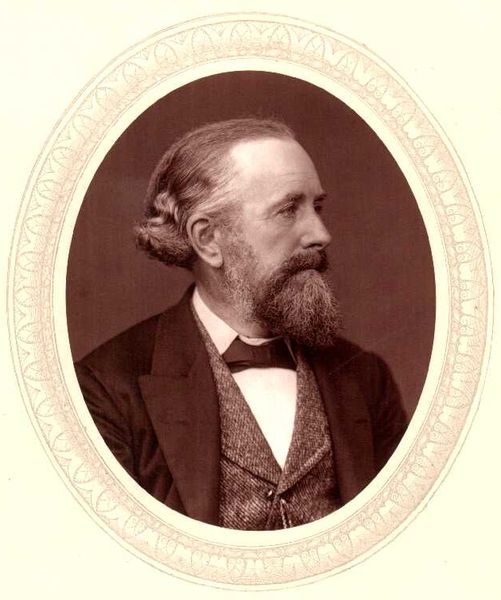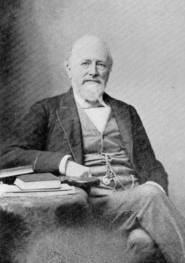This Week in Science History - Valence Theory
Interview with
This week in science history saw, in 1852, the publication of a paper by Edward Frankland describing the valence theory of why chemical elements bond with only a certain number of other elements. Although he did not know the precise mechanism behind it, his idea has shown to be correct and is still taught in schools today as one of the basic principles of chemistry.
 Born in Lancaster, England in 1825, Frankland began his career in chemistry straight from school. After several apprenticeships, he was a student at the University of Marburg in Germany for a time before taking up a position as professor of Chemistry back in London. He later went on to become a professor of chemistry at the Royal Institution and a member of the Royal Society of Chemistry.
Born in Lancaster, England in 1825, Frankland began his career in chemistry straight from school. After several apprenticeships, he was a student at the University of Marburg in Germany for a time before taking up a position as professor of Chemistry back in London. He later went on to become a professor of chemistry at the Royal Institution and a member of the Royal Society of Chemistry.
During his work soon after returning to England, Frankland noted that some chemical elements seem to form compounds involving always the same number of other elements, either in groups of three or five - for example nitrogen combining with three hydrogen atoms to form ammonia, NH3. In the paper of 1852, he uses the phrase 'combining power' to describe what we would now understand as valency - how many chemical bonds will be formed by an atom of a given element.
All atoms are made up of a positive nucleus surrounded by negatively charged electrons, organised into 'shells'. Chemical bonds are the result of the most energetically favourable arrangement of the outer shell electrons of the atoms between their nuclei. Bonds either occur as a result of the atoms sharing the electrons between them, or by one atom donating electrons to another (in this case the atoms are known as ions, because they have a positive or negative charge).
 Take hydrogen gas for example. In the gas, the hydrogen atoms pair up to form H2 molecules that make up the gas. In the H2 molecule, each hydrogen atom has one electron in the outer shell, and when they pair up, the electrons are equally attracted to the other hydrogen's positive nucleus.
Take hydrogen gas for example. In the gas, the hydrogen atoms pair up to form H2 molecules that make up the gas. In the H2 molecule, each hydrogen atom has one electron in the outer shell, and when they pair up, the electrons are equally attracted to the other hydrogen's positive nucleus.
The number of bonds an atom will form is determined by the number of electrons present in its outer shell. The outer shell of an atom can contain a maximum of 8 electrons, depending on its position in the periodic table (or 2 in the case of a few elements like lithium and hydrogen). All atoms 'want' to have a full outer shell of electrons. In the case of a metal like Lithium, its outer shell, which could contain up to 8 electrons, only has one, which means it 'wants' to lose that electron so that the next shell down, which is full, will be the outer one. Oxygen has six electrons in its outer shell - 2 short of a possible 8, so it will want to grab two electrons from another atom or two to fill those spaces. This means that lithium has a valency of one - it will form a single bond using the one electron in its outer shell. Oxygen has a valency of two - forming two bonds, such as in H2O, water.
 As with many discoveries, we now know the situation is more complex than Frankland realised and that although some elements such as carbon and fluorine always form the same number of bonds (4 and 1 respectively in this case, such as in CH4, methane and HF hydrofluoric acid), some will vary, like iron, symbol Fe, which will form compounds as iron II and iron III - so you can get FeO, iron II oxide, and Fe2O3, iron III oxide, which we know as rust.
As with many discoveries, we now know the situation is more complex than Frankland realised and that although some elements such as carbon and fluorine always form the same number of bonds (4 and 1 respectively in this case, such as in CH4, methane and HF hydrofluoric acid), some will vary, like iron, symbol Fe, which will form compounds as iron II and iron III - so you can get FeO, iron II oxide, and Fe2O3, iron III oxide, which we know as rust.
Despite the huge advances in chemistry over the past 150 years, and without the understanding we now have of the structure of atoms and the physics behind chemical reactions, Frankland's analytical mind drove him to discuss the idea of valence before anyone else, still one of the key ideas in chemistry today.
- Previous Tech Update - E-Books and E-Readers
- Next The Million Pond Project










Comments
Add a comment